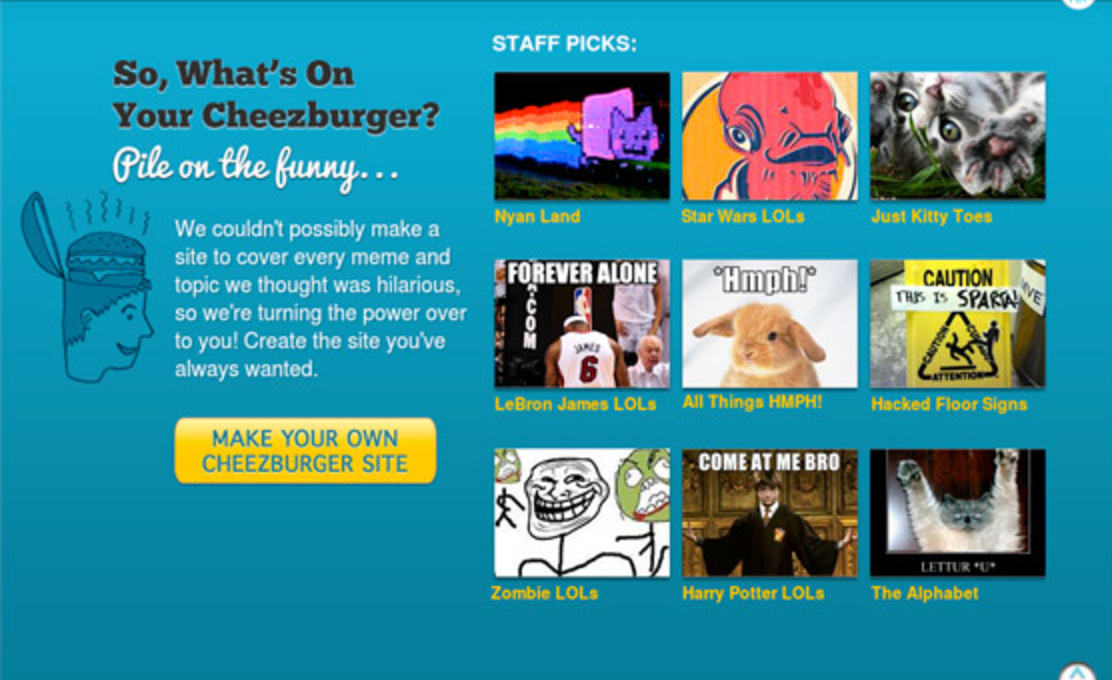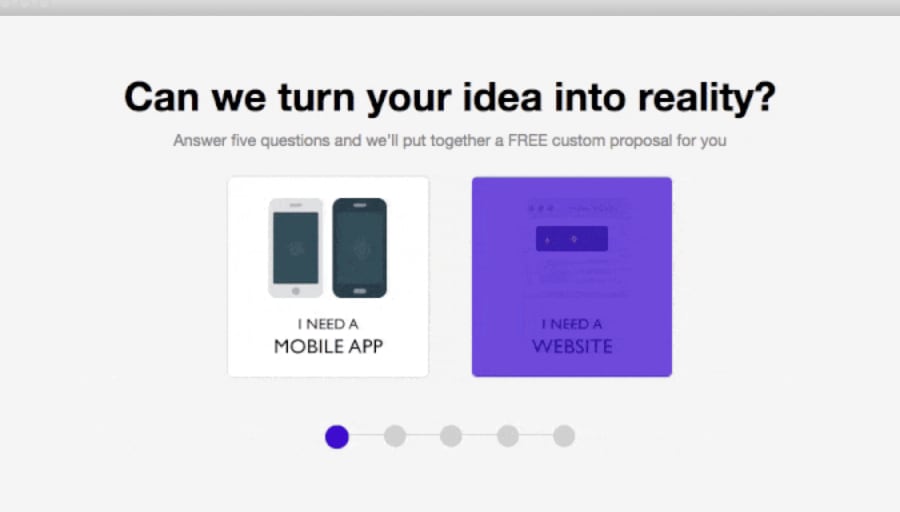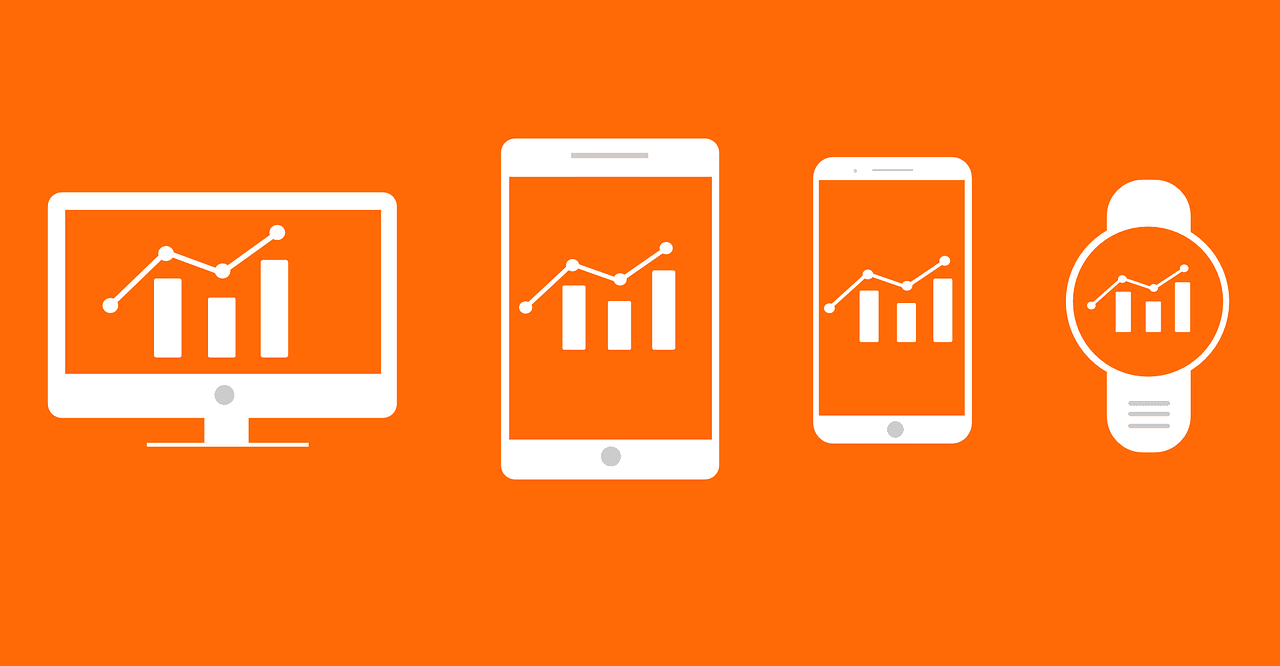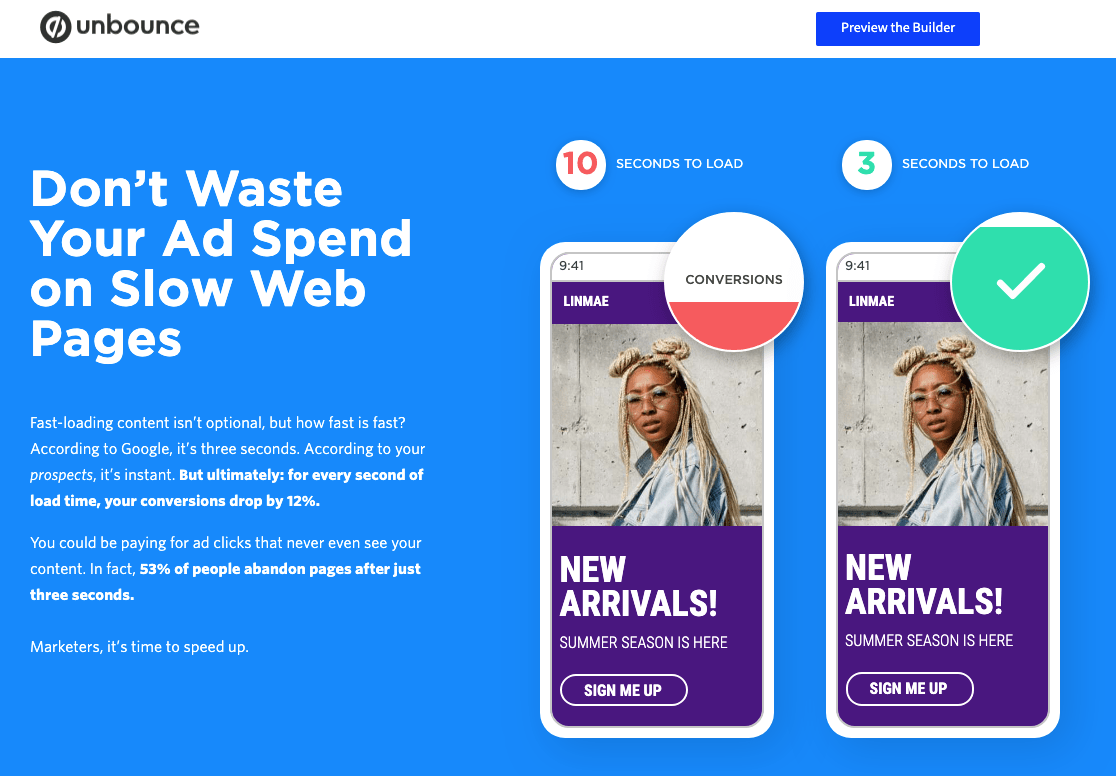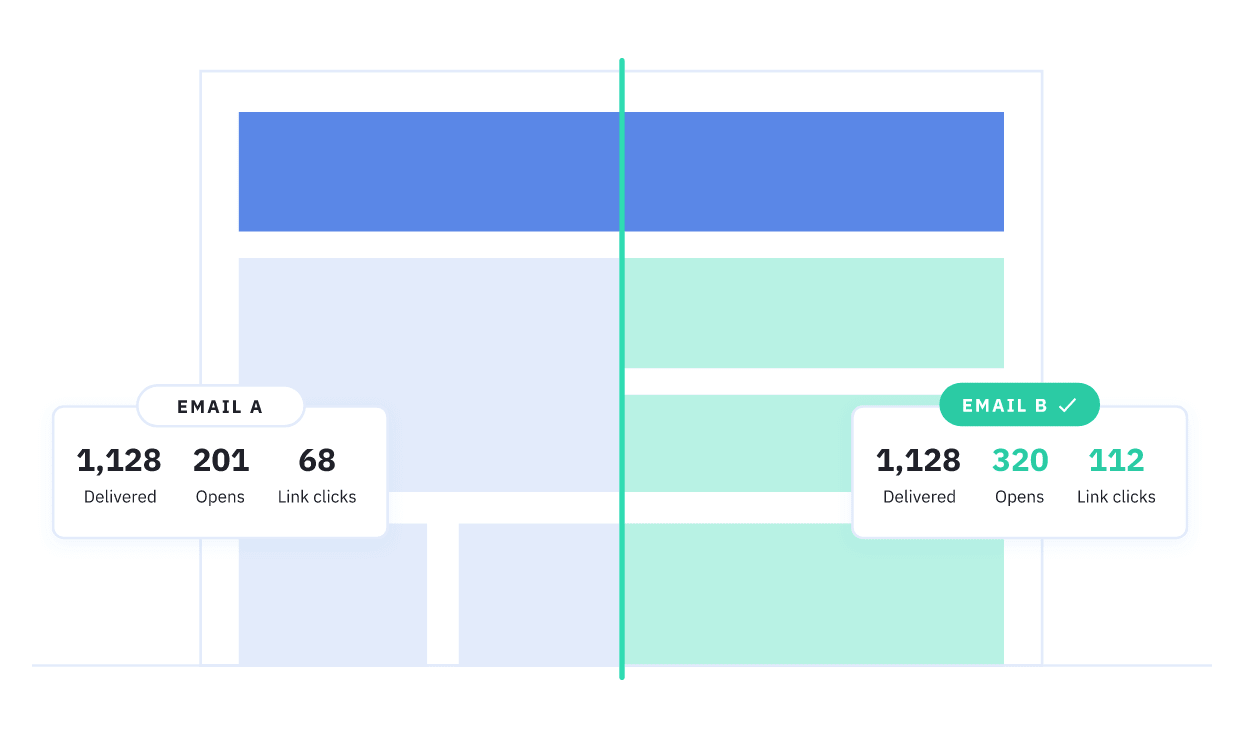Conversion rate optimisation (CRO) involves enhancing the usability of your website and guiding visitors to the check-out. You can do this by improving the design and content on your website together with installing various technologies that create an impression with customers.
The goal of a CRO campaign is to turn visitors into buyers, gather consumer data, call for an appointment, download incentives such as an e-book, visit your physical location or get in touch to learn more about your products and services.
Below are 12 smart ways that are proven to increase online conversions.
#1: Use landing pages
Landing pages make it easier for customers to make a purchase. A well-designed landing page will focus on one specific sales item and includes a call-to-action informing customers exactly what to do next. By directing traffic to landing pages, you will notice an increase in conversions.
The copy for your landing page should be brief and concise, yet persuasive enough to compel end-users to take action. The easier you make purchasing products or services for consumers the more likely they are to take action.
Use high-quality visuals for your landing pages. Engaging images help to generate appeal in your product and increase the desire of buyers. Furthermore, top quality graphic designs are memorable and easier for consumers to recall. So even if visitors are not ready to make a purchase when they first land on your website, they are more likely to recall your ad and return when they are ready to make a purchase.
#2: Track existing conversions
You’re probably familiar with the expression, ‘if it ain’t broken, don’t try and fix it.’ The same is true for CRO. Instead, use tactics that are working to your advantage by piggy-backing on techniques that are proving to be successful.
By tracking the conversions you are getting, you can monitor the strengths and weaknesses of your sales funnel. Tracking conversions shouldn’t be limited to your website, but your entire sales process. This includes offline strategies such as flyers and phone calls. By identifying the areas in your sales strategy that are missing conversions, you can make necessary adjustments in line with strategies that are working.
#3: Build consumer confidence
The Edelman Trust Barometer published in 2016 indicates online shoppers feel a ‘growing inequality of trust’ towards brands. Common concerns include security and whether brands will deliver on their promise.
Proving you are a reliable business builds consumer confidence. This ultimately encourages them to purchase from you over your rivals. You can use a variety of strategies to enhance your online credibility:
- Encourage customers to leave comments on your social media networks
- Solicit customer testimonials
- Publish case studies on your website
- Promote customer and comment feedback
- Highlight industry “trust” seals or awards on your website
- Offer generous guarantees
The more fool proof trust indicators you reveal to your audience, the more comfortable they feel. But it is important that the trust indictors are genuine. Anyone can invent testimonials and post them on a website. But if you can back these testimonials up from case studies and comments left on social media networks, your credibility ratings go up.
#4: A/B Testing
Improving conversion rate optimisation requires measuring the effectiveness of your advertising copy together with the layout and design of your various platforms.
For example, if you are using landing pages to steer traffic to your product pages, use a different layout or wording in each ad and assess which landing page returns the best performance.
A/B testing is a simple concept, but can have a dramatic impact on the success of your digital marketing campaigns. There are also many ways with which you can perform A/B testing:
- Copy and design of landing pages
- Call-to-action buttons
- Number and length of form fields
- Subject lines in emails
- Graphic images
- Headline and tagline in copy
- Length of copy
#5: Optimise sign-up forms
Opt-in forms are the backbone of lead generation, app downloads and other consumer data gathering strategies. But they are also a pivotal tool for driving conversions that improve revenue.
The method you use to optimise and design your lead generation forms will vary from one campaign to the next. But the essence of sign-up forms is to use the data to your advantage when looking to improve conversions across the board.
Therefore, determine what information you want from customers and how you intend to use consumer data. Short forms with only a handful of fields or less typically entice more people to fill provide personal details. However, forms with multiple fields tend to give you better quality leads – thus a higher likelihood of converting.
To optimise lead generation forms, use a precise heading to make it clear to visitors what they are signing up for – what will they get in return for leaving their personal contact details. Also use action words to create a call-to-action.
Also leave fields empty. Eye tracking studies show that users find placeholder text in long forms confusing. They are therefore more likely to make errors filling in the form. This can have a negative impact on conversions. As an alternative, use descriptions or hints to clarify what information is required in each field.
#6: Create a user-friendly website
Ask a digital marketer what the most critical feature of a website returns the most conversions and they will say, the sitemap. If navigating a website is confusing, customers become frustrated and bail out. Furthermore, they don’t come back.
Websites that are easy to navigate have a higher conversion rate. Not only that, but search engines rank websites from data they source from usability metrics – ultimately impacting on the amount of traffic passing through your website. The more traffic you receive, the more conversions you make.
Primary and secondary navigation menus, together with call-to-action buttons enhance the usability of a website. But there are many other tweaks and tactics you can use to improve conversions too.
And now Google has switched to a mobile-first index, the onus to build user-friendly on mobile devices such be a priority. Once one-click-to-buy buttons becomes common practice on smartphones and tablets, the infrastructure of your website will have a significant impact on the success of many online businesses.
#7: Create a compelling value proposition
The strength of your value proposition is one the most important factors involved when converting visitors into customers. Just in case you are unsure, a value proposition is the reason you give customers to buy your products or services rather than your competitors.
Ideally, your value proposition is something unique about your company or service other companies in your industry do not boast. If this is not possible, create an enticing aspect about your company that sets you apart from your rivals.
A compelling value proposition piques the interest of a customer. It should differentiate you from your competitors and strike an emotional chord with the right customers for you.
Consumers are drawn to brands that resonate with them. The decision making process of a consumer is often based on whether they feel a connection with a brand. And people connect with brands that have a personality or social values similar to their own.
#8: Integrate CRM software with Live Chat
Customer Relationship Management (CRM) software enables online businesses to track interactions with customers. These powerful tools boast various functions that support CRO.
CRM software identifies where prospects are in the purchasing path. You can therefore structure marketing campaigns using automated emails to provide visitors with more information about your products.
A popular CRM we are seeing more of on the net is Live Chat. This gives visitors to a website the option to speak to a customer advisor in real time.
Live Chat puts you in a stronger position to be on-hand to answer questions or guide people to the page they want. Statistics show that Live Chat increases conversion rate and 63% of customers say they are more likely to return to a website that has a Live Chat feature.
#9: Repeat sales offers
Consumer psychologist say people need to have an experience of a brand between 5 and 7 times before they remember the company name. The experiences involved are things like seeing a logo or an ad in multiple locations.
But the same is true when offering a sale. The rules of effective frequency reveals the average customer has to be exposed to a marketing message a certain number of times before they make a purchasing decision.
There are various ways you can plant offers throughout your purchasing path. Position them in headlines and the body of the copy, in email subject headers, landing pages and social media advertising campaigns.
Use technologies and lead generation forms to capture consumer data so that you can repeatedly connect with prospects. Send emails offering free shipping to customers that have abandoned shopping carts or offer discounts to consumers that have visited the same product page on more than one occasion.
#10: Monitor ready-to-buy consumers on social media
When devising a strategy to improve conversion rate, don’t forget social media platforms. Invest in advanced technologies that enable you to identify customers that are lining up a purchase.
Social media monitoring tools enable you to listen in on conversations and track your brand or find out what is trending in your local area. This gives brands the opportunity to join conversations and offer advice. This is a good route that can ultimately lead to a conversion.
#11: Offer incentives for referrals
Word of mouth is still the best form of advertising. So why not encourage your existing customers with an incentive for referring their family, friends or peers to your business.
You can effectively use a referral campaign on social media networks and review sites. Offer discounts or free gifts to customers that leave positive reviews or recommendations.
#12: Strong call to action
Every page or section of your website that threads customers through to another page requires a call-to-action telling visitors where to go next and what they can expect to find by following a particular link.
The same rules apply with any form of marketing material. Marketers need to tell people what to do next. But not only that, the call to action should compel readers to take action.
An example of a strong call to action is to remind prospects of the key benefit they will receive by taking advantage of your offer. Then telling them what to do; call this number, visit this website, click this button etc.
If you need assistance increasing your conversion rate, contact Venture Harbour. Our proven strategies are designed to drive revenue.

